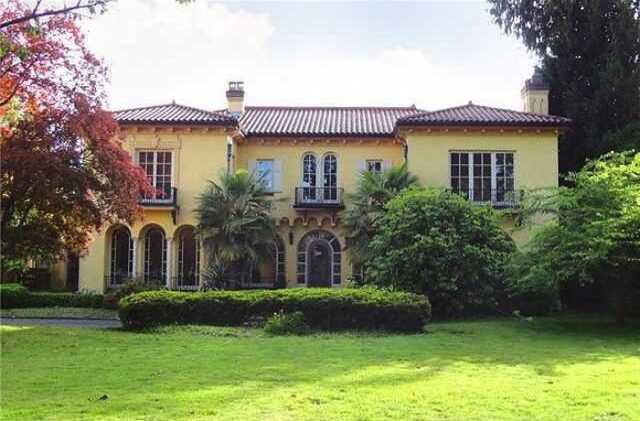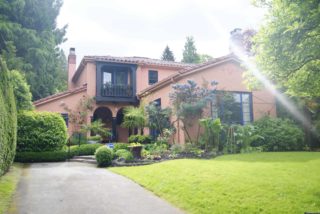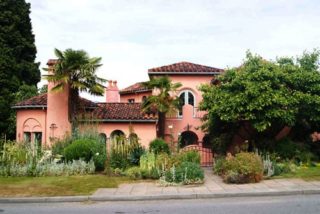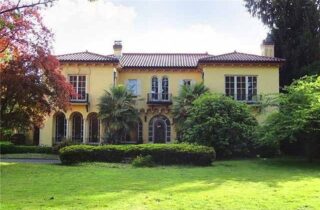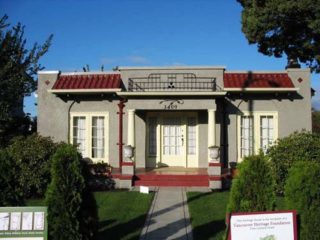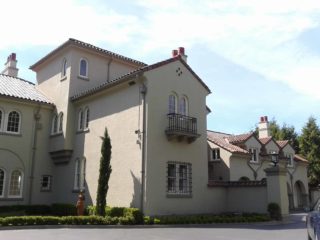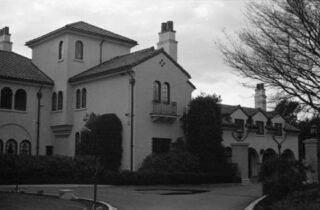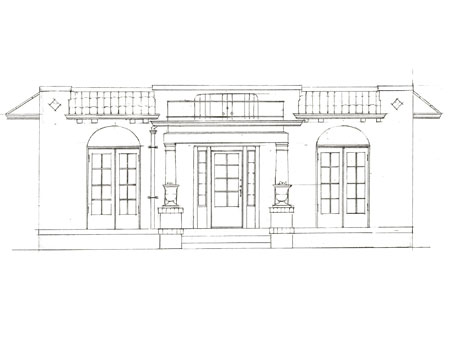
Click on the diagram or expand the term index to learn more about the features.
Foundation
The portion of a building that extends below the ground, providing a firm base for the structure above.
French Doors
A pair of glazed doors that open out in the middle and are hinged to the door jambs.
Ornamentation
Decorative features used to accent particular components of a building.
Side Lights
One or more vertically framed windows that flank a door, often divided into several lights.
Spanish Tile Roofing
Terra cotta or concrete semi-circular tiles with an overlapping edge.
Stucco
A material – sometimes called render, made of an aggregate (sand) and a binder (Portland cement, and water). It is applied wet and hardens to a very dense solid. Sometimes used on interior walls, and ceilings (called California plaster), it is mainly used on exteriors and can cover less visually appealing construction materials such as concrete, cinder block, or clay brick.
Form
A style defined by low-pitched or seemingly flat tile roofs and white stucco walls. Spanish Colonial Revival buildings often have decorative iron grills over windows, arch-topped paired windows, and small stucco parapets embellished with small tiled shed-roof projections supported by false purlins or brackets. Occasionally, they have decorative towers set into the body of the roof. Front doors typically are sheltered by a portico or set forward in a projecting bay, perhaps with spiral columns or pilasters. Test
Details
- Low-pitched ceramic tile roof – usually red
- Little or no eave overhang
- One or more prominent arches over door or main window, or under porch roof
- Usually stucco siding
- Asymmetrical facade
- Wrought iron ornamentation or railing
Background
Spanish colonial style first came into the public eye at the 1915 Panama-California Exposition in San Diego. Following the popularity of the Mission Revival style, it drew inspiration from California’s Spanish colonial history. The style was initially based on Spanish colonial architecture from across Latin America. As popularity grew, other architects began looking to Spain for inspiration. As a result, the style has a mix of Old and New World elements. Features that distinguish Spanish Colonial Revival from Mission Revival include low-relief ornamentation, decorative cornices and wrought iron. In Vancouver, the style is found on elaborate mansions such as Rio Vista and Casa Mia but also smaller bungalows. The sprawling villas that lend inspiration to the style made it well-suited for grander homes.
Materials
Red tile roofs, white roughcast stucco, heavy robust wood accents around windows, doors and eaves make up the Spanish style. Ornamental wrought iron appears in grillwork over windows and door openings, and iron accents turn up in lanterns, sconces and railings. Patterned tile turns up as accents in the stucco in open-ended gables and on stair risers.
